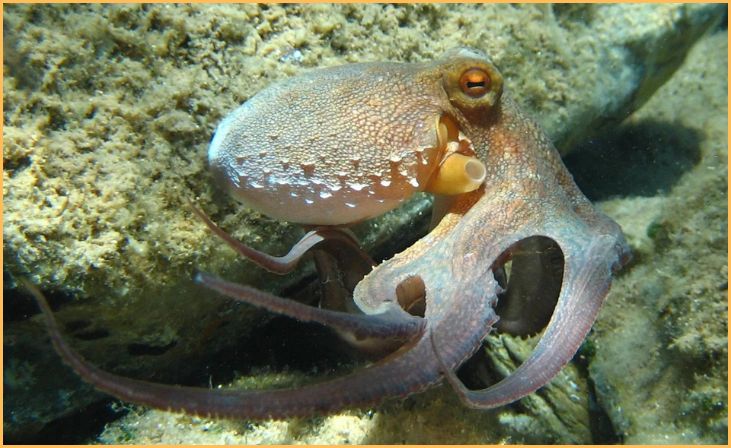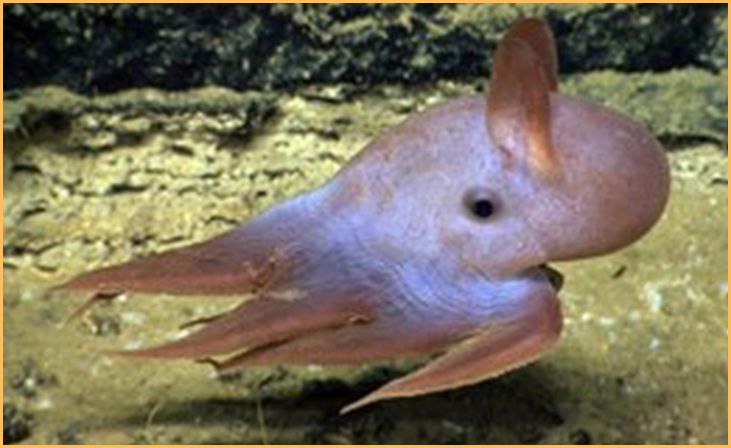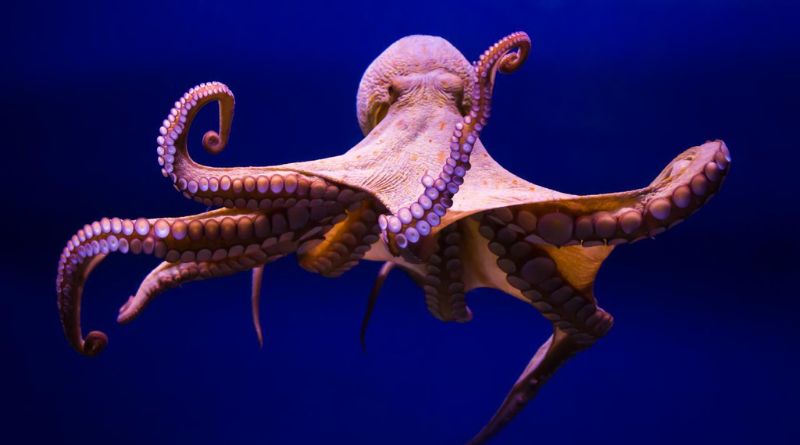Marvels of the Ocean : Delve into the mesmerizing realm of oceanic wonders as we uncover the mystique surrounding seven incredible octopus species. These enigmatic creatures, known for their intelligence, adaptability, and otherworldly abilities, showcase the marvels hidden beneath the ocean’s surface. From their mesmerizing camouflaging skills to their complex behaviors, octopuses epitomize the astonishing diversity of marine life.
Each species boasts unique traits, from the mimic octopus’s astounding ability to imitate other creatures to the vibrant colors of the blue-ringed octopus, signaling their deadly venom. The giant Pacific octopus, with its immense size and strength, and the tiny but astonishingly intelligent veined octopus all contribute to the fascinating tapestry of cephalopod diversity.
Join us on an underwater exploration as we unveil the captivating world of these remarkable creatures. Through this journey, gain insights into their behaviors, habitats, and extraordinary adaptations, shedding light on their integral role in the intricate ecosystem of the ocean.
Incredible Octopus Species
Common Octopus (Octopus vulgaris)

The Common Octopus is a marvel of nature found in various oceans worldwide. What sets them apart is their remarkable intelligence and adaptability. They possess a complex nervous system that enables problem-solving abilities and learning from their environment. One of their most fascinating features is their ability to change color and texture rapidly, thanks to specialized pigment cells called chromatophores.
This incredible camouflage skill helps them blend seamlessly with their surroundings, serving both as a defensive mechanism against predators and a hunting strategy for ambushing prey. Additionally, their soft bodies enable them to squeeze through tight spaces, showcasing their agility and flexibility.
Blue-ringed Octopus (Hapalochlaena spp.)
The Blue-ringed Octopus, belonging to the Hapalochlaena genus, is a tiny yet highly venomous cephalopod found in the Pacific and Indian Oceans. Despite its diminutive size, these creatures possess one of the most potent toxins in the animal kingdom. Their vibrant blue rings, which appear as a warning when threatened or agitated, serve as a cautionary signal due to the deadly neurotoxin they carry.
Despite their small stature, they command respect as one of the most venomous marine animals. Their camouflaging abilities and unique hunting tactics make them both elusive and dangerous. Despite their perilous nature, they play a crucial role in marine ecosystems, showcasing the delicate balance between their awe-inspiring beauty and potential danger.
Also Read: 8 American Things That Have Taken Europe by Storm
Giant Pacific Octopus (Enteroctopus dofleini)
The Giant Pacific Octopus, scientifically named Enteroctopus dofleini, stands as the largest known octopus species, showcasing incredible adaptability and intelligence. Inhabiting the North Pacific Ocean, these creatures boast a hefty size, with individuals reaching up to 16 feet in length and weighing hundreds of pounds. Their iconic appearance, featuring bulbous heads and eight powerful arms lined with suction cups, grants them superb hunting abilities and remarkable problem-solving skills.
They display a diverse range of coloration and textures, camouflaging seamlessly within their surroundings. Known for their curiosity and complex behaviors, they exhibit cunning tactics, including opening jars and navigating intricate mazes in captivity. Despite their solitary nature, they play a crucial role in marine ecosystems, controlling prey populations and serving as a key predator. The Giant Pacific Octopus remains a captivating symbol of the ocean’s enigmatic wonders.
Dumbo Octopus (Grimpoteuthis spp.)

The Dumbo Octopus, belonging to the Grimpoteuthis genus, is an enchanting deep-sea dweller recognized for its peculiar appearance and graceful movements. Residing in the depths of the world’s oceans, these octopuses sport ear-like fins resembling the beloved Disney character Dumbo, which they use to elegantly navigate the deep waters. Their small size, typically around 8-12 inches in length, and translucent, umbrella-shaped bodies make them a rare and captivating sight.
With a gentle and almost ethereal presence, they gracefully glide using jet propulsion, displaying a mesmerizing dance in the dark depths. Adapting to extreme deep-sea environments, these elusive creatures feed on small prey, displaying a remarkable adaptation to their remote and largely unexplored habitat. The Dumbo Octopus remains a charming emblem of the mysterious and fascinating realm of the deep ocean.
Mimic Octopus (Thaumoctopus mimicus)
The Mimic Octopus, scientifically known as Thaumoctopus mimicus, is a master of disguise and mimicry, showcasing unparalleled adaptability in the underwater world. Inhabiting the Indo-Pacific seas, these cephalopods possess a unique ability to imitate various marine creatures by changing their skin color, texture, and movement. Their repertoire includes mimicking venomous species like lionfish, flatfish, and sea snakes, using this camouflage to evade predators and ambush prey.
With eight flexible arms and a malleable body, they morph seamlessly, displaying an astonishing array of disguises that serve both defensive and hunting purposes. The Mimic Octopus’ remarkable mimicry skills highlight its intelligence and resourcefulness, illustrating the intricate strategies employed by marine creatures for survival in their dynamic and ever-changing ocean habitats.
Coconut Octopus (Amphioctopus marginatus)
The Coconut Octopus, scientifically named Amphioctopus marginatus, is a captivating cephalopod renowned for its resourcefulness and unique behavior. Inhabiting the tropical waters of the western Pacific Ocean, these intelligent creatures display remarkable ingenuity by utilizing discarded coconut shells as portable shelters. They carry these shells along the seabed, deploying them for protection against predators and as a safe haven for resting or incubating eggs.
Their adeptness at manipulating objects and their environment showcases their exceptional problem-solving skills and adaptability. Beyond their coconut-shell antics, they exhibit a diverse range of behaviors, from complex communication using color changes to their stealthy hunting techniques. The Coconut Octopus remains a fascinating example of nature’s inventiveness, revealing the astonishing abilities of marine life to innovate and thrive in their underwater habitats.
Blanket Octopus (Tremoctopus spp.)

The Blanket Octopus, belonging to the Tremoctopus genus, is an extraordinary creature found in the open oceans, distinguished by its astonishing size disparity between genders and its mesmerizing appearance. While males are small, measuring only a few centimeters, females can reach lengths of up to 6 feet, adorned with web-like membranes between their arms resembling a flowing blanket, hence their name.
These ethereal drapes serve both as a display and a defense mechanism, billowing dramatically to intimidate predators. In a fascinating defense tactic, females can detach the webbing, distracting and confusing attackers. They exhibit an intriguing lifestyle, often found floating at the ocean’s surface, showcasing a unique beauty and captivating allure that adds to the enigmatic nature of these deep-sea dwellers.
Also Read : 7 Remarkable Musicians Who Also Excel Beyond the Stage
Conclusion
The seven incredible octopus species unveil the ocean’s astonishing diversity and the mesmerizing adaptations these creatures possess. From their intelligence to their intricate abilities like camouflage and venomous defense mechanisms, octopuses captivate with their uniqueness. Exploring these cephalopods provides a glimpse into the complexities of marine life, reminding us of the ocean’s vast mysteries yet to be discovered. Embrace the marvels of these extraordinary creatures, and appreciate their significance in maintaining the delicate balance of the ocean’s ecosystem.
Through these remarkable creatures, we realize the interconnectedness of marine life and the importance of preserving their habitats. As we continue to learn from and admire these intelligent beings, let’s foster a deeper understanding of their crucial role in marine ecosystems. May our fascination with octopuses inspire a commitment to protecting the oceans, ensuring the conservation of these magnificent species for generations to come.
FAQs
Octopuses have specialized cells called chromatophores, allowing them to change color and texture by expanding or contracting these cells.
No, not all octopus species are venomous. While some, like the blue-ringed octopus, possess venom, others, like the flapjack octopus, do not.
Octopus lifespans vary among species, with smaller species living about six months to a year, while larger ones, like the giant Pacific octopus, can live up to five years.






